We may receive a commission when you use our affiliate links. However, this does not impact our recommendations.
One of the assignments I give my entry level students is the task of dismantling an upholstered piece of furniture. They are required to save and count all of the parts, including every staple and nail. I ask them to measure and draw one of the individual parts from the piece of furniture.
I use these elements of the assignment so they can work backwards from a complex piece of furniture to the minute details that make up a complete whole. They have the opportunity to see how primary and secondary species and qualities of wood are utilized. It is also a ton of fun! To round out the exercise, we visit a professional upholstery factory.
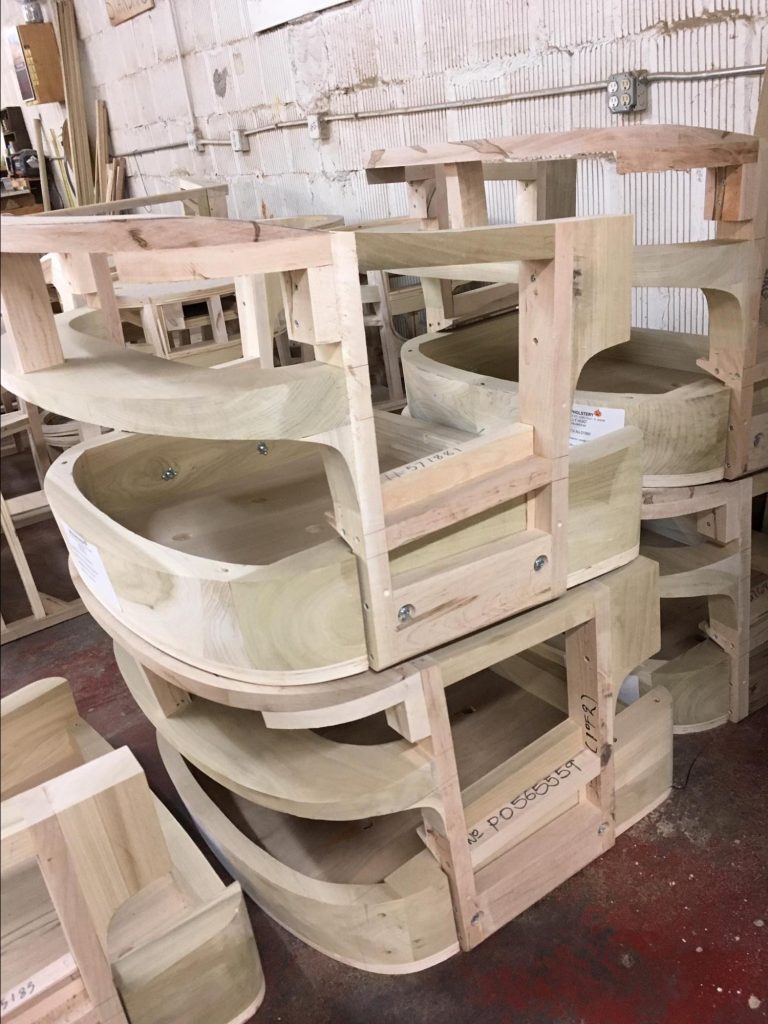
I like to visit furniture factories so the students can see how companies scale up production from a small shop to making pieces in quantities of tens or hundreds. We recently visited Anees Upholstery in Chicago, and one of the owners, Samir, gave us a wonderful tour, answering all of our questions and shedding insight to their particular process.
Samir started in the area where they stored active prototypes. He showed us a full sized ½ couch prototype where they were trying to figure out an arm to seat height. He showed us a daybed with a new foam combination, but covered in inexpensive tufted muslin, and a leather bed which they’ll use in the showroom. The fabricators had figured out every part of the bed minus how the stretchers attached to the headboard, which they did with a 2 x 6 and drywall screws. Of course, they would never deliver one finished this way to a home, but problem solving isn’t pretty!
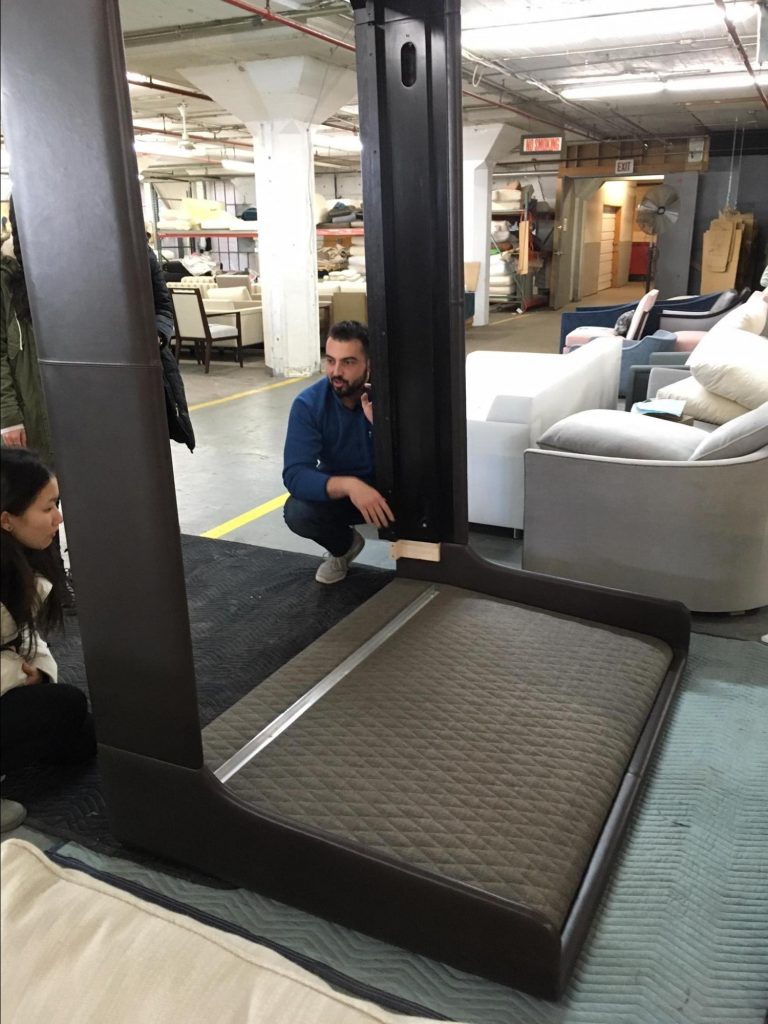
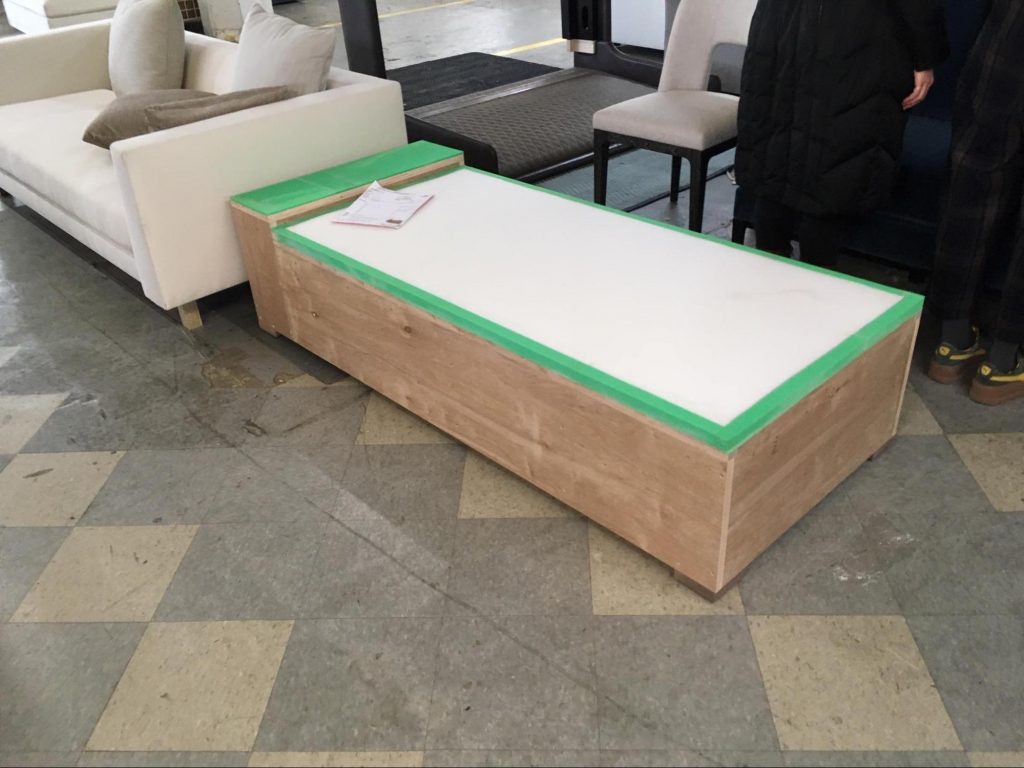
The upholsterers were amazing, and so fast. While my students tend to be cautious and careful when building their pieces of furniture, they were able to observe professional furniture makers in action. The confidence of the workers was evident as they air nailed battens with rapid fire, or fed wood through a planer. It was like watching pro basketball players do layups before a game. They made it look so easy. I remind my students of the thousands of hours of practice that goes into the decision making and confidence of these skilled workers.
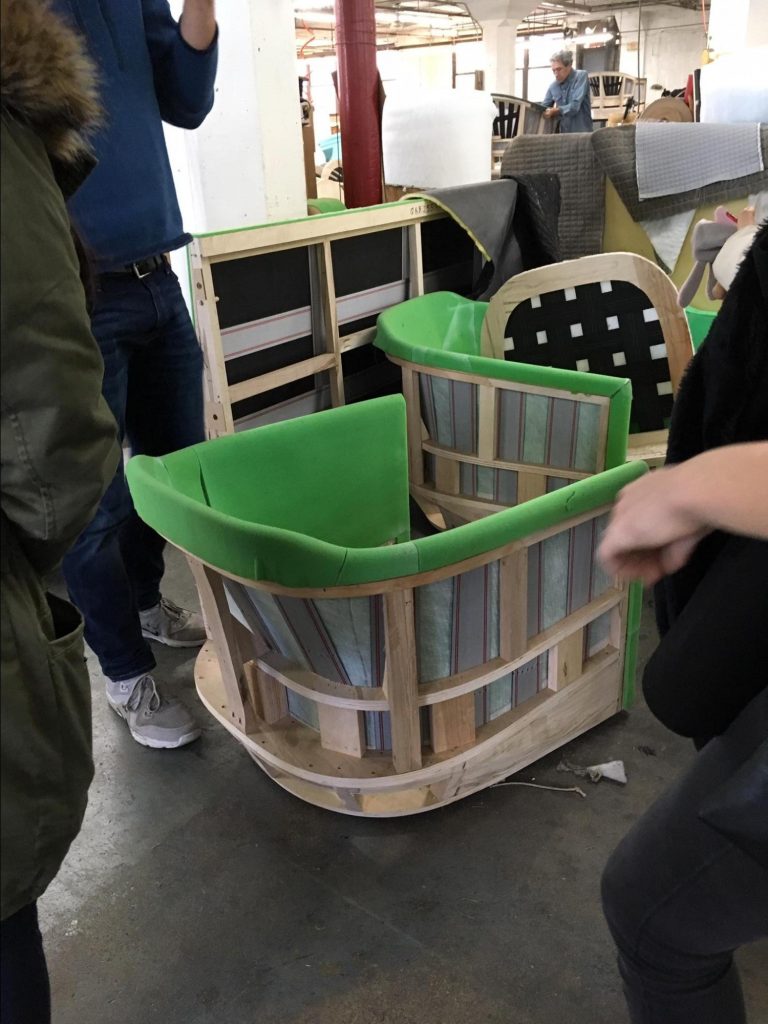
I love when the students see the innards of the upholstered furniture. It’s enlightening to see how rudimentary some of the fastening techniques are, but also how sophisticated. Upholstery requires areas to fasten support straps and springs, so is often more layered than a conventional solid wood piece. Knotty wood and various species are often used. On one piece we could see a new larger diamond quilting pattern on top of the original quilting drawn in permanent Sharpie.
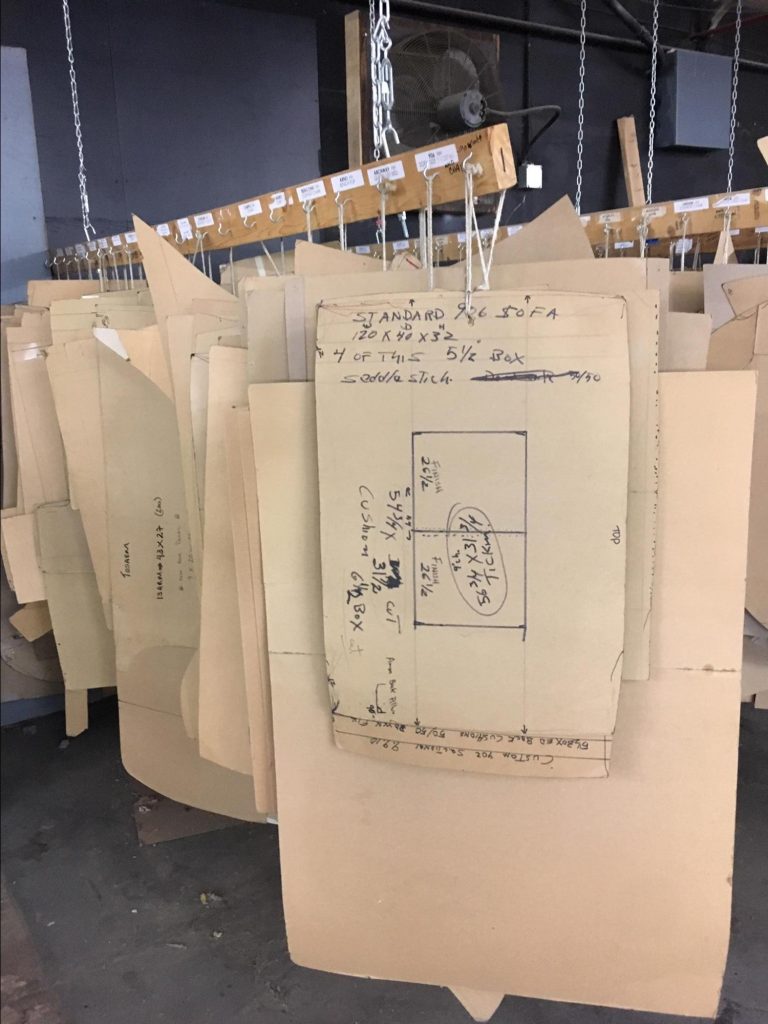
As we finished the tour, we ended up in the room with all of the upholstery patterns. Hundreds of patterns carefully organized and hung. Each pattern with specific notes on construction, the result of integrating a wood and metal frame with layers of foam, muslin and upholstery to resolve a beautiful, functional, high quality piece of furniture. For Anees and Samir, prototyping was an essential part of the process for getting a production design perfect. It’s a great lesson for anyone building furniture, no matter the scale of distribution.
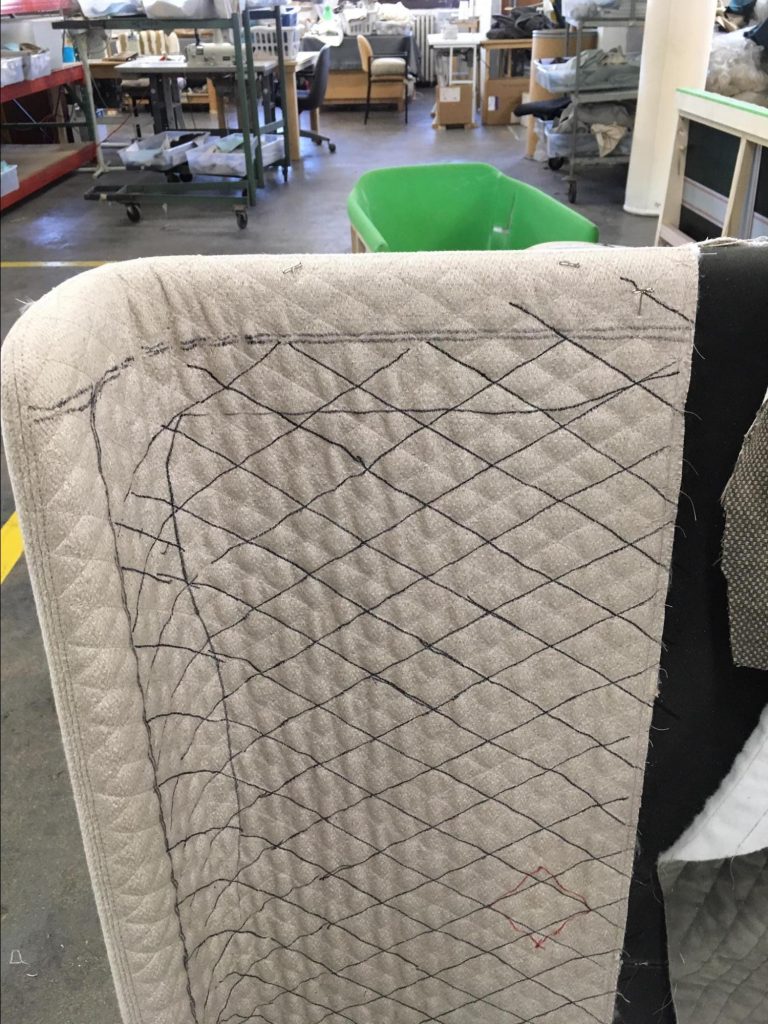
Further Reading: Upholstered Corners Are Hard!
Here are some supplies and tools we find essential in our everyday work around the shop. We may receive a commission from sales referred by our links; however, we have carefully selected these products for their usefulness and quality.










This is WONDERFUL! I teach upholstery in Minneapolis and often discuss with students the general lack of crossover between woodworkers and upholsterers – which is surprising and unfortunate because furniture is rarely just one or the other. Wood and soft materials are very different mediums, but having some familiarity with and appreciation for both really empowers us to be far better craftspeople. I LOVE working with woodshops that understand frame construction – Your students are very lucky for this experience you’ve included in their education!
Best, Cynthia Bleskachek
The Funky Little Chair